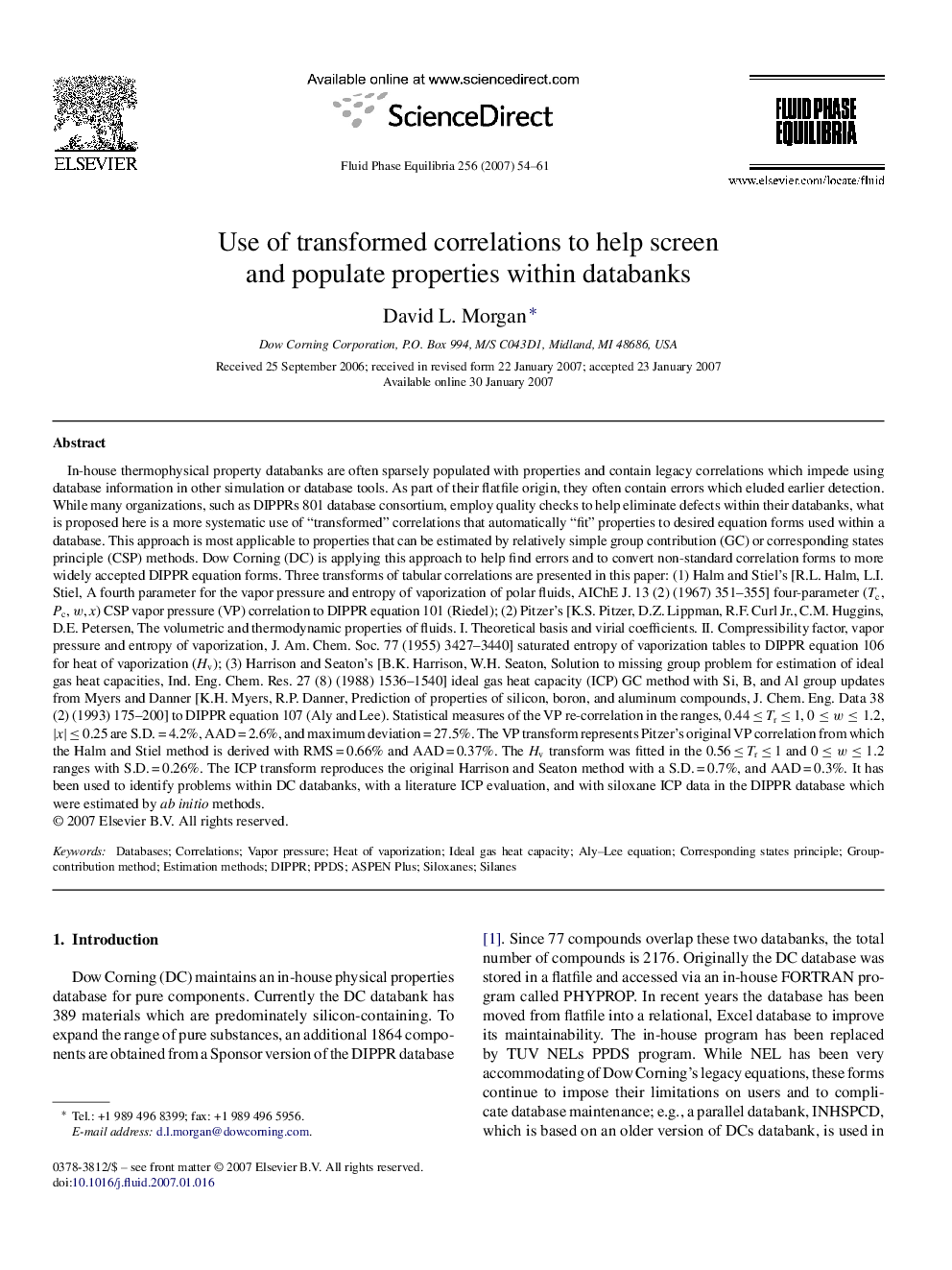| کد مقاله | کد نشریه | سال انتشار | مقاله انگلیسی | نسخه تمام متن |
|---|---|---|---|---|
| 203979 | 460689 | 2007 | 8 صفحه PDF | دانلود رایگان |

In-house thermophysical property databanks are often sparsely populated with properties and contain legacy correlations which impede using database information in other simulation or database tools. As part of their flatfile origin, they often contain errors which eluded earlier detection. While many organizations, such as DIPPRs 801 database consortium, employ quality checks to help eliminate defects within their databanks, what is proposed here is a more systematic use of “transformed” correlations that automatically “fit” properties to desired equation forms used within a database. This approach is most applicable to properties that can be estimated by relatively simple group contribution (GC) or corresponding states principle (CSP) methods. Dow Corning (DC) is applying this approach to help find errors and to convert non-standard correlation forms to more widely accepted DIPPR equation forms. Three transforms of tabular correlations are presented in this paper: (1) Halm and Stiel's [R.L. Halm, L.I. Stiel, A fourth parameter for the vapor pressure and entropy of vaporization of polar fluids, AIChE J. 13 (2) (1967) 351–355] four-parameter (Tc, Pc, ww, x) CSP vapor pressure (VP) correlation to DIPPR equation 101 (Riedel); (2) Pitzer's [K.S. Pitzer, D.Z. Lippman, R.F. Curl Jr., C.M. Huggins, D.E. Petersen, The volumetric and thermodynamic properties of fluids. I. Theoretical basis and virial coefficients. II. Compressibility factor, vapor pressure and entropy of vaporization, J. Am. Chem. Soc. 77 (1955) 3427–3440] saturated entropy of vaporization tables to DIPPR equation 106 for heat of vaporization (Hv); (3) Harrison and Seaton's [B.K. Harrison, W.H. Seaton, Solution to missing group problem for estimation of ideal gas heat capacities, Ind. Eng. Chem. Res. 27 (8) (1988) 1536–1540] ideal gas heat capacity (ICP) GC method with Si, B, and Al group updates from Myers and Danner [K.H. Myers, R.P. Danner, Prediction of properties of silicon, boron, and aluminum compounds, J. Chem. Eng. Data 38 (2) (1993) 175–200] to DIPPR equation 107 (Aly and Lee). Statistical measures of the VP re-correlation in the ranges, 0.44 ≤ Tr ≤ 1, 0≤w≤1.20≤w≤1.2, |x| ≤ 0.25 are S.D. = 4.2%, AAD = 2.6%, and maximum deviation = 27.5%. The VP transform represents Pitzer's original VP correlation from which the Halm and Stiel method is derived with RMS = 0.66% and AAD = 0.37%. The Hv transform was fitted in the 0.56 ≤ Tr ≤ 1 and 0≤w≤1.20≤w≤1.2 ranges with S.D. = 0.26%. The ICP transform reproduces the original Harrison and Seaton method with a S.D. = 0.7%, and AAD = 0.3%. It has been used to identify problems within DC databanks, with a literature ICP evaluation, and with siloxane ICP data in the DIPPR database which were estimated by ab initio methods.
Journal: Fluid Phase Equilibria - Volume 256, Issues 1–2, 1 August 2007, Pages 54–61